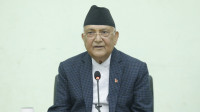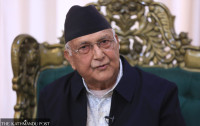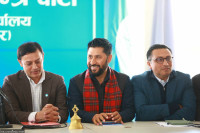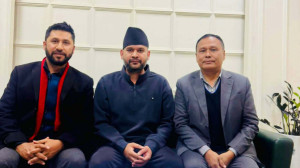Politics
Why the idea of alternative forces is still failing to get traction in Nepal
There’s scope for new parties given growing disenchantment with traditional parties for their failure to deliver, but those claiming to be alternative forces must first win people’s trust and have clear ideologies, analysts say.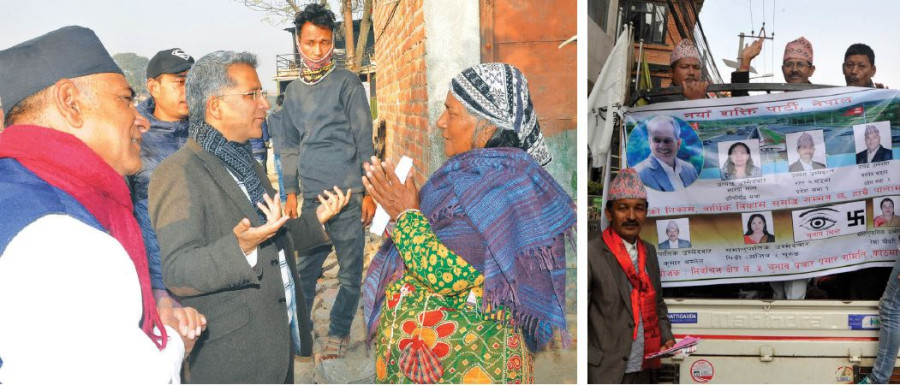
Binod Ghimire
During the 2017 elections, the electoral battle between Nepali Congress stalwart Prakash Man Singh and Bibeksheel Sajha Party’s candidate journalist-turned-politician Rabindra Mishra in the prestigious Kathmandu Constituency 1 was neck in neck right till the finish. If Singh had been beaten that would have been a statement. But he prevailed.
Bibeksheel Sajha was a newcomer in Nepal’s political scene and had been formed only in July 2017 after the merger of the Ujwal Thapa-led Bibeksheel Party, born out of a social movement against price rise and corruption and the Rabindra Mishra-led Sajha Party.
Since then it has virtually disappeared. The party even split.
Another party that made a foray into Nepal’s political spectrum, with big newspaper ads and a mass gathering at Dashrath Stadium in Kathmandu, was Naya Shakti Party Nepal. The party was formed by Baburam Bhattarai, a Maoist leader who quit the party just 11 days after the promulgation of the constitution in 2015. As the name suggested, Bhattarai wanted to establish his party as a “new force”. Today, Bhattarai is a leader of the Janata Samajbadi Party Nepal. The Naya Shakti Party first merged with Samajbadi Party Nepal in May 2019. Then a merger between Samajbadi Party Nepal and Rastriya Janata Party Nepal in April formed Janata Samajbadi Party Nepal.
The Janata Samajbadi Party Nepal too says that it wants to emerge as an alternative force that could counter the traditional political parties.
However, the discourse on alternative forces that got quite some traction in the lead up to the 2017 elections and thereafter seems to be on the wane, if it is not completely lost somewhere.
Establishing a political identity is not easy, as the newcomers found out, according to analysts. A new party first needs to win the people’s trust, they say.
“A party needs pro-people agenda and a leadership with integrity to get established among the people,” said Shyam Shrestha, a left-leaning political analyst. “I don’t see that in the existing forces.”
While Bhattarai himself was the sole Naya Shakti leader to secure a seat, Bibeksheel Sajha failed to make it to the House of Representatives.
Bibeksheel Sajha Party had fought in 60 parliamentary seats across the country. To their credit, they won three seats in the Bagmati provincial assembly.
There, however, was general understanding among a section of people, especially from urban centres, that both Naya Shakti and Bibeksheel Sajha could at least be able to show their presence given the growing disenchantment among people with the political parties that have governed the country for decades.
“Those in alternative politics think their success lies in the failure of the traditional forces. That’s not true,” Surya Raj Acharya, who quit Sajha Party in July this year, told the Post. “They have to connect with the people to earn their trust. Making comments on social media and issuing press statements as reactions won’t give anyone political momentum.”
Acharya’s assessment seems to ring somewhat true.
After the merger of the two big communist forces—CPN-UML and CPN (Maoist Centre)—the Nepal Communist Party was born. With a strong mandate handed to it, the Nepal Communist Party (NCP) is currently governing the country. The Nepali Congress is the main opposition. Both the ruling and opposition parties have faced the charges of failing on their fronts.
Despite the failure of the two major parties, often called traditional parties for their existence for decades, the discourse on alternative forces has failed to gain traction.
According to Puranjan Acharya, a political analyst with close ties with the Nepali Congress, despite growing distrust among the younger generation towards the traditional parties, those claiming to be the “new forces” are failing to cash in on the opportunity.
“There are a lot many agendas that the alternative forces can raise,” said Puranjan. “First and foremost, they need to interact more with the general populace.”
According to Acharya, who also served as an advisor to former prime minister Girija Prasad Koirala, those claiming to be alternative forces need to change their working style.
“Leaders of these parties need to come out of their comfort zone first if they want to get established in politics,” Acharya told the Post.
Today’s “alternative forces” are mired in bickering and ego.
In January 2019 Bibeksheel Sajha Party split because of differences over the working style of the party leadership.
Janata Samajbadi Party is struggling to complete its unification because there are too many “senior” leaders who want “respectable” space in the party committees.
Janata Samajbadi Party is the third largest force in the federal parliament with its major vote base in the southern belt. It has some established and national level leaders, who were previously either with the UML, or Nepali Congress. The party too expects to cash in on the people’s frustration at the ruling and main opposition parties.
Manish Suman, a member of the Janata Samajbadi Party’s executive committee, said the merger of the two parties was for a departure from conventional politics so that it can grow into an alternative political force.
It’s biggest challenge is to establish itself in the hill and mountain regions.
According to Surya Raj Acharya, the former Sajha Party leader, three factors are needed to develop a party as an alternative force—its aim, which includes agenda and value different from the traditional forces, clarity in ways to achieve them, and the means for it.
According to him, Bibeksheel Nepali and Sajha Party, which were formed with the ambition to become an alternative to the Nepal Communist Party and the Nepali Congress, are more like reactionary forces than the ones guided by politics.
At present the two parties are in a bid to unite again as an attempt to form “a strong alternative force”.
“Both parties have realised their mistakes from the past and are very positive toward forming a united force again,” said Milan Pandey, chairperson of the Bibeksheel Nepali. “The stronger the force, the easier it is to fight against the conventional parties.”
They are eyeing local elections which will be held in about a year and a half.
Pandey said there is massive dissatisfaction among the general public towards the major political forces, which creates a good scope for new forces.
Janata Samajbadi Party, which governs Province 2, also has its own ambitions.
“We are working to set an example in our functioning along with the transformation in the working style in the provincial and local governments,” said Suman.
But that will not be easy, by their own admission.
Both Pandey and Suman agree that it is necessary that they have a clear ideology and an ‘alternative’ political culture to gain the trust of the people.
Both Sajha Party and Bibeksheel Nepali often face allegations of lacking a clear political ideology. As far as Janata Samajbadi Party is concerned, it's a combination of three parties which had their own political ideologies and the party appears to be confused as to what should be its guiding principle.
Nonetheless, with the ruling Nepal Communist Party having failed to deliver and the Nepali Congress stuck in its own quagmire, the time is ripe for alternative forces, analysts say.
“People are desperately looking for a reliable party as an alternative to the existing ruling and opposition parties,” said Shrestha, the left-leaning political commentator. “The sooner the alternative forces become successful in catering to the aspirations of the new generation, the sooner they will take the dominant space in Nepali politics.”




 5.55°C Kathmandu
5.55°C Kathmandu
